There’s something so wonderfully simple and satisfying about this Roasted Asparagus with Lemon and Parmesan Recipe—the way that vibrant asparagus snaps with a tender bite, kissed by bright lemon and rich Parmesan. It’s a quick side that turns any meal into a memorable one.
Jump to:
- Why You'll Love This Recipe
- Ingredients & Why They Work
- Make It Your Way
- Step-by-Step: How I Make Roasted Asparagus with Lemon and Parmesan Recipe
- Top Tip
- How to Serve Roasted Asparagus with Lemon and Parmesan Recipe
- Make Ahead and Storage
- Frequently Asked Questions:
- Final Thoughts
- Roasted Asparagus with Lemon and Parmesan Recipe
Why You'll Love This Recipe
This roasted asparagus recipe is one of my go-to side dishes because it’s effortless, quick, and packs so much flavor. Every time I make it, I’m amazed how just a few simple ingredients can come together into something that feels both fresh and indulgent.
- Speedy & Simple: It takes less than 15 minutes from start to finish, perfect for busy weeknights or last-minute guests.
- Bright & Balanced Flavors: The lemon adds a fresh zing that lifts the earthiness of the asparagus, while Parmesan brings a salty, nutty finish.
- Easy to Master: The technique is straightforward – no complicated steps or exotic ingredients needed, so you can focus on getting it just right.
- Versatile Side Dish: It pairs beautifully with everything from pasta and grilled chicken to roasted meats and even seafood, making it incredibly adaptable to your weekly menu.
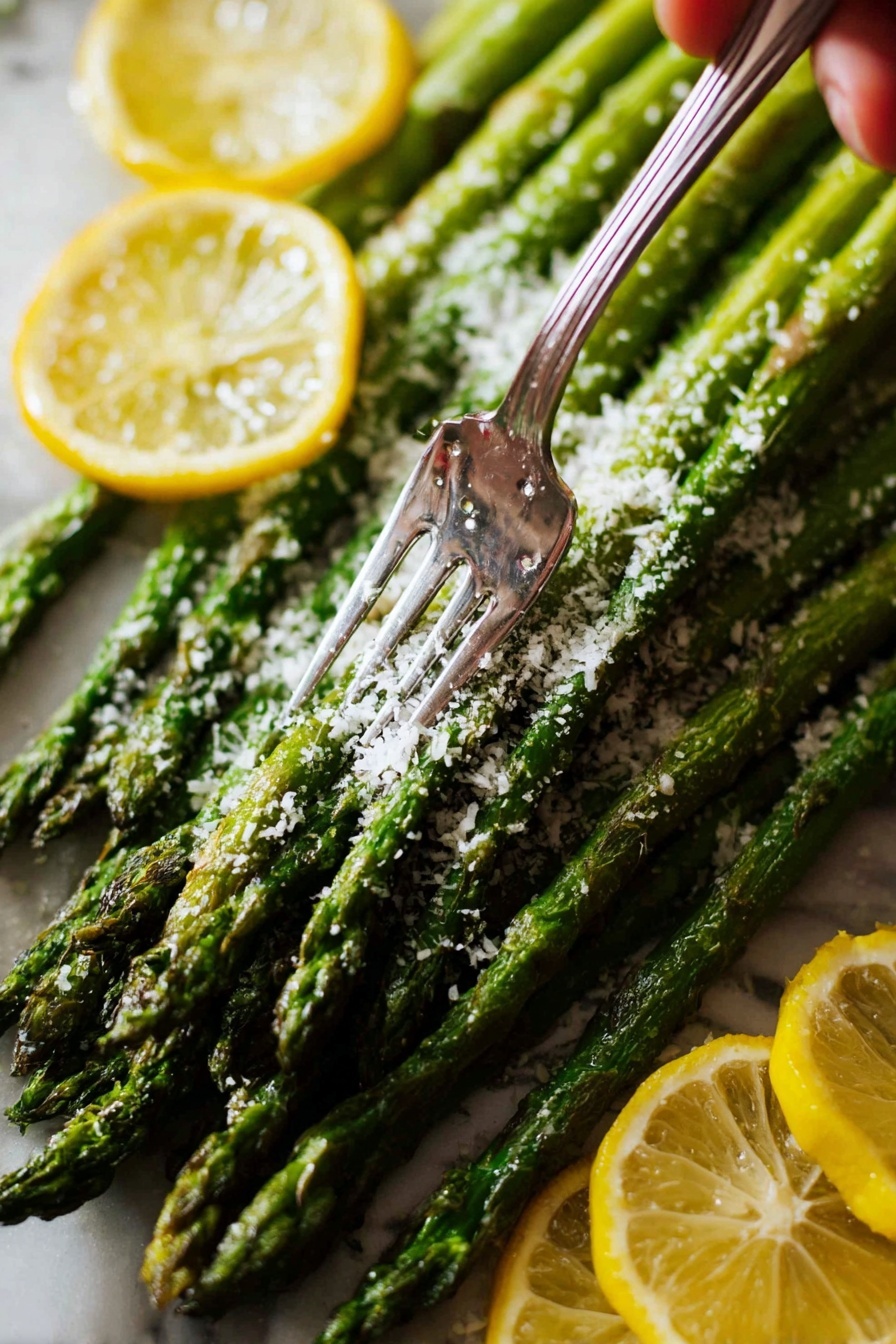
Ingredients & Why They Work
Each ingredient here plays a simple but important role in making this dish sing. The freshness of the asparagus is key, and seasoning it gently with garlic, salt, and pepper lets the natural flavors shine. The olive oil helps roast the spears perfectly, while the finishing touch of lemon and Parmesan brings brightness and a little indulgence.
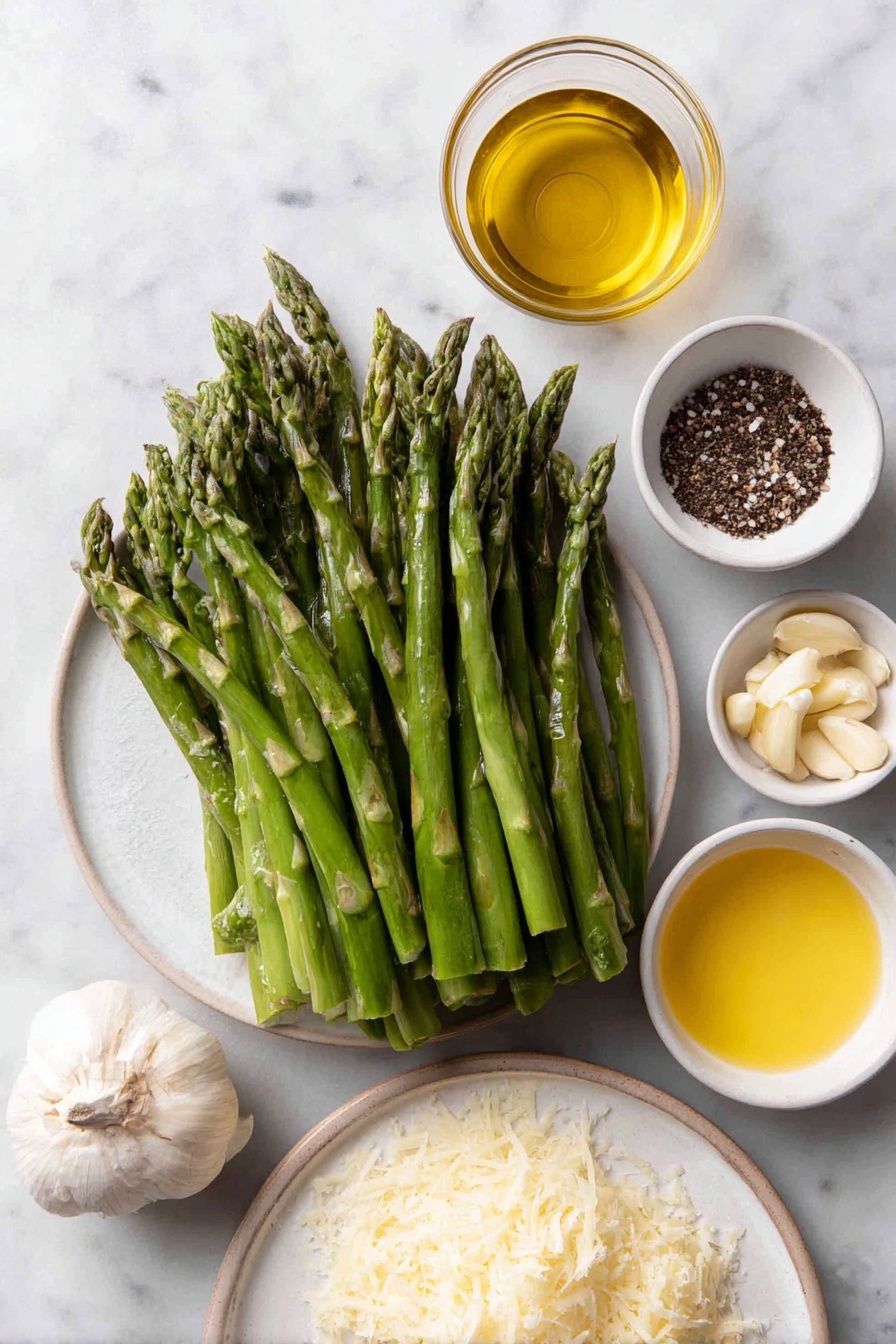
- Asparagus: Choose firm, bright green spears with closed tips—thicker stalks take a bit longer to roast, so adjust cooking time accordingly.
- Extra Virgin Olive Oil: Adds richness and helps the asparagus roast to a gentle crisp without drying out.
- Salt and Pepper: Simple seasonings to elevate the natural taste without overpowering it.
- Garlic: Freshly minced garlic infuses a subtle pungency—use a garlic press for ease and even distribution.
- Lemon Juice (optional): Adds a fresh citrus tang that brightens and balances the dish.
- Parmesan: Freshly grated for that salty, nutty flavor that melts beautifully over warm asparagus.
Make It Your Way
I love playing around with this Roasted Asparagus with Lemon and Parmesan Recipe by switching up that citrus punch or adding some herbs for extra aroma. You can easily personalize it to your mood or what you have in your pantry.
- Add Fresh Herbs: I sometimes sprinkle thyme or rosemary just before roasting—adds a cozy, earthy layer of flavor.
- Spicy Kick: A pinch of red pepper flakes can bring surprising warmth without overpowering the asparagus.
- Make it Vegan: Simply skip the Parmesan or swap for nutritional yeast to keep that cheesy flavor without dairy.
- Use Different Citrus: Try a splash of fresh orange or lime juice for a twist—both add their own unique brightness.
Step-by-Step: How I Make Roasted Asparagus with Lemon and Parmesan Recipe
Step 1: Prep the Asparagus Just Right
Start by preheating your oven to 220°C (that’s about 430°F). Take each stalk of asparagus and snap off the woody bottoms where they naturally break. This little trick makes a huge difference—no tough, fibrous bites here, just tender stalks ready to roast.
Step 2: Toss and Season with Care
Lay the asparagus on a baking tray, drizzle the extra virgin olive oil over them, then sprinkle salt, pepper, and your minced garlic. Toss everything gently but thoroughly so every spear gets coated. Don’t overcrowd the pan—spread them out so they roast evenly rather than steam.
Step 3: Roast to Perfection
Pop the tray into the oven and roast for about 7 minutes. If your asparagus spears are thicker, they may need up to 12 minutes. Keep an eye on them: you want some golden color on the tips and tender stalks without drying out or looking wrinkly. It’s that balance that makes the magic happen.
Step 4: Brighten and Finish with Parmesan
Once roasted, remove the asparagus from the oven and toss with fresh lemon juice—this wakes up the flavors instantly. Pile them onto your serving dish, then grate a generous shower of Parmesan on top. Serve immediately while still warm, and watch everyone dig in.
Top Tip
I’ve made roasted asparagus dozens of times and found that getting the timing and heat just right is key to making this dish shine. Here are some of my best tips from those kitchen experiments that’ll help you serve restaurant-worthy asparagus every time.
- Don’t Overcrowd the Pan: Leaving space between asparagus spears lets them roast instead of steam, which brings out those lovely caramelized edges.
- Watch Thickness: Thicker asparagus needs a few more minutes, but too long will dry them out—test by piercing with a fork near the end of cooking.
- Fresh Lemon Juice Last: Add lemon after roasting instead of before to keep its bright flavor sharp and fresh.
- Use Freshly Grated Parmesan: The texture and melting quality of freshly grated cheese is unbeatable—skip pre-grated for the best taste.
How to Serve Roasted Asparagus with Lemon and Parmesan Recipe
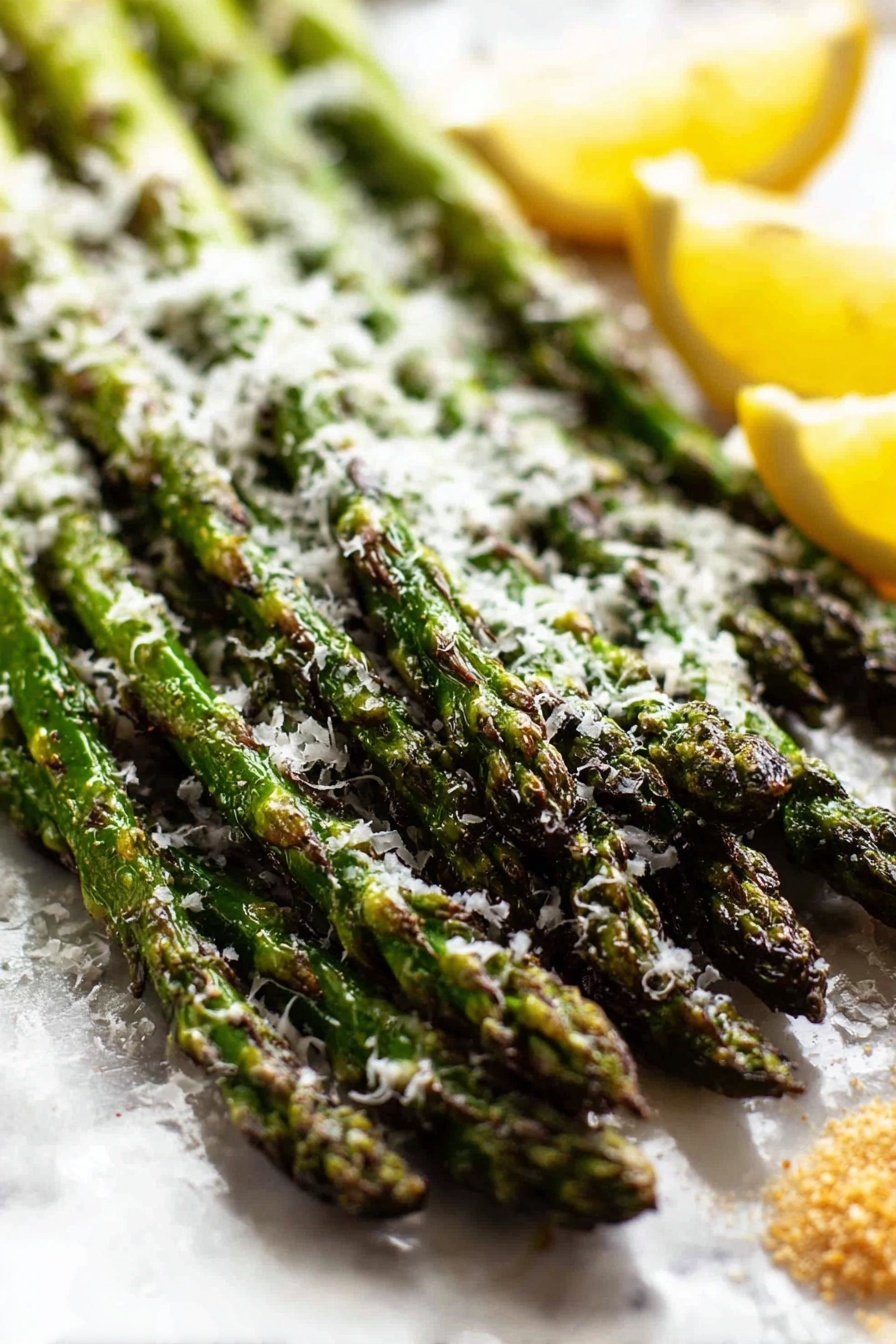
Garnishes
I often finish with a sprinkle of extra lemon zest for an extra burst of citrus aroma, and a few toasted pine nuts add a lovely crunch that complements the creamy Parmesan perfectly. Sometimes a scattering of fresh parsley or basil brightens the plate visually and flavor-wise.
Side Dishes
This Roasted Asparagus with Lemon and Parmesan Recipe pairs beautifully with a simple grilled chicken breast, seared salmon, or alongside creamy risotto. It’s also fantastic with roasted potatoes or a light quinoa salad for a vegetarian meal.
Creative Ways to Present
For dinner guests, I like arranging the asparagus in tidy bundles tied with a fresh herb sprig on a long platter—looks elegant and inviting. You could also drizzle a balsamic glaze in a zigzag for a pretty and flavorful contrast.
Make Ahead and Storage
Storing Leftovers
Leftover roasted asparagus keeps well in an airtight container placed in the fridge for up to 2 days. I find reheating gently in the oven preserves the texture better than microwaving, which can make them a bit soggy.
Freezing
I don’t usually freeze roasted asparagus because the texture can get mushy once thawed. Instead, I prefer making this fresh — but if you must freeze, flash freeze the spears on a tray first, then transfer to a freezer bag to minimize clumping.
Reheating
To bring leftover roasted asparagus back to life, I gently reheat it at 180°C (350°F) for about 5-7 minutes in the oven until warmed through and slightly crisp again. This helps avoid the rubbery texture microwaves sometimes cause.
Frequently Asked Questions:
While fresh asparagus is ideal for roasting because of its crisp texture, you can use frozen asparagus if you thaw and pat it very dry first to avoid sogginess. Keep in mind the cooking time may vary and the texture might not be as firm as fresh.
To snap the woody ends cleanly, hold each asparagus spear with both hands and bend gently until it breaks naturally. This usually removes the tough part, leaving the tender middle and tips for roasting.
Yes! You can prep the asparagus by trimming and seasoning it ahead of time and keep it covered in the fridge for a few hours before roasting. For best flavor and texture, roast just before serving.
Parmesan is the classic finishing touch that brings a salty nuttiness to the roasted asparagus, but it’s optional. If you'd prefer a dairy-free or vegan option, you can skip it or use nutritional yeast for a similar umami effect.
Final Thoughts
Honestly, this Roasted Asparagus with Lemon and Parmesan Recipe holds a special place in my kitchen because it’s always the little side that gets devoured first. Once you get the technique down, it’s a reliable way to bring elegance and flavor to any meal with minimal fuss. Give it a try—I promise you’ll find yourself reaching for this recipe time and again, turning simple asparagus into something truly delightful.
Print
Roasted Asparagus with Lemon and Parmesan Recipe
- Prep Time: 5 minutes
- Cook Time: 12 minutes
- Total Time: 17 minutes
- Yield: 4 servings
- Category: Side Dish
- Method: Baking
- Cuisine: Australian
- Diet: Vegetarian
Description
This simple and delicious roasted asparagus recipe features fresh asparagus spears tossed with extra virgin olive oil, garlic, salt, and pepper, then roasted to perfection until tender with a slight char. Optionally finished with a splash of lemon juice and freshly grated parmesan, it makes an ideal healthy side dish.
Ingredients
Main Ingredients
- 500 g asparagus (1 lb, about 3 standard bunches)
- 1 ½ tablespoon extra virgin olive oil
- ¼ teaspoon salt
- ¼ teaspoon black pepper
- 1 garlic clove, finely minced
Optional Finishes
- 2 tablespoon lemon juice
- 2 tablespoon freshly grated parmesan
Instructions
- Preheat the Oven: Set your oven to 220°C (430°F) or 200°C (fan-forced).
- Prepare Asparagus: Snap off the woody ends of the asparagus; they will naturally break at the right point for optimal tenderness.
- Toss Ingredients: Place asparagus on a baking tray. Drizzle with extra virgin olive oil, then sprinkle with salt, pepper, and minced garlic. Toss everything to coat evenly and spread out in a single layer.
- Roast Asparagus: Roast in the oven for 7 minutes, or 10 to 12 minutes for very thick stalks. Monitor closely to ensure the ends get a little color but the spears don’t become wrinkly or overcooked.
- Remove and Finish: Take asparagus out of the oven once cooked through with slight browning. Toss with lemon juice if desired, transfer to a serving platter, and grate parmesan over the top if using. Serve immediately.
Notes
- Use fresh, firm asparagus for best results.
- Thicker asparagus stalks need longer roasting times to cook through.
- Do not overcook; asparagus should remain slightly crisp with a slight char.
- Flavored finishes like lemon juice and parmesan are optional but add brightness and richness.
- Can be served warm or at room temperature as a side dish.
Nutrition
- Serving Size: 125 g
- Calories: 70 kcal
- Sugar: 2 g
- Sodium: 150 mg
- Fat: 5 g
- Saturated Fat: 1 g
- Unsaturated Fat: 4 g
- Trans Fat: 0 g
- Carbohydrates: 5 g
- Fiber: 3 g
- Protein: 3 g
- Cholesterol: 0 mg

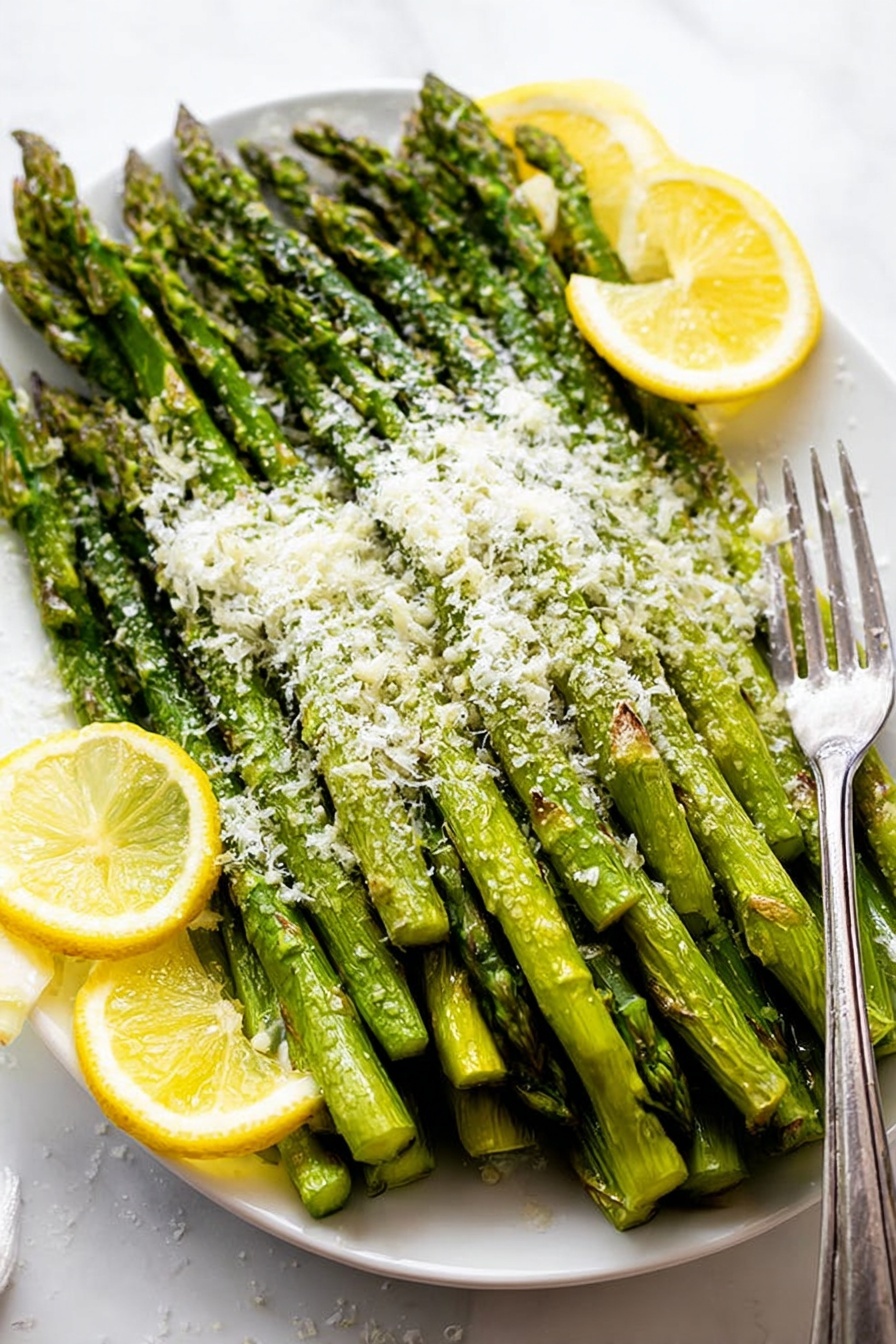

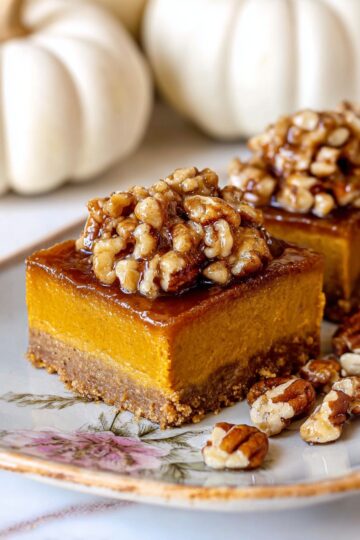


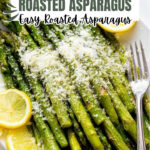
Leave a Reply